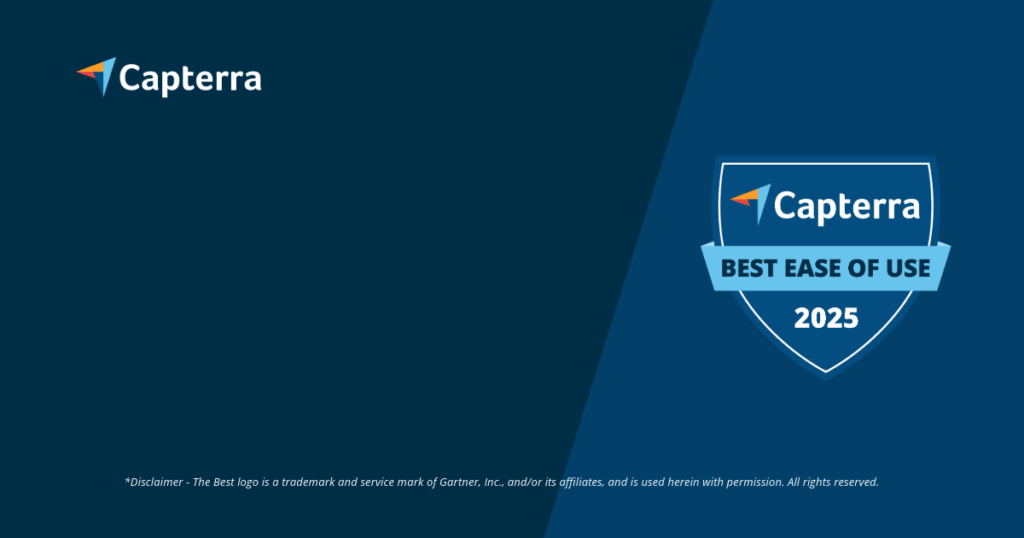Increasing efficiency in construction: The revolution through digital defect management
What is digital defect management?
Digital defect management refers to the use of software solutions for recording, documenting, tracking, and resolving construction defects. It replaces traditional, often paper-based processes with a fully digital workflow. The goal is to increase efficiency, improve communication and ensure comprehensive documentation. In digital defect management, defects are recorded directly on the construction site using mobile devices like smartphones or tablets, often enhanced with photos, notes, and precise location on digital blueprints. This information is stored centrally and made available to all project stakeholders in real-time. We at Valoon have made it our mission to optimize exactly this process through intuitive construction software. Our software transforms everyday communication, such as via messaging apps, into structured project data, thus simplifying workflows. Because we understand: Especially in the construction industry, ease of use is crucial for the acceptance of new technologies.
- Definition and core objectives: Use of software for the digital recording, documentation, tracking, and resolution of construction defects with the aim of increasing efficiency, improving communication, and ensuring comprehensive documentation.
- Indispensability in modern construction: Need to cope with time and cost pressures, securing competitiveness through faster responses and transparent processes.
- Advantages over traditional methods: Reduction of administrative efforts, prevention of information losses and misunderstandings, as well as legally secure documentation.
- Focus of the article: Providing a comprehensive overview of digital defect management solutions, their functionalities, selection criteria, and legal aspects.
Why is digital defect management essential today?
In today’s fast-paced construction industry, time and cost pressures are omnipresent. Traditional defect management using clipboard and pen often leads to delays, information losses, and misunderstandings. Digital defect management is essential, to address these challenges and secure competitiveness. It enables a faster response to defects, a transparent tracking of the resolution status, and a significant reduction in administrative effort. The automatic generation of reports and legally secure documentation are other important aspects that support this approach. Improving the flow of information between field and office sustainably is a core concern. With our solutions for defect management app , we at Valoon are dedicated to this exact challenge and aim to lower the barriers to digitalization.
Goal of this article: A comprehensive guide
This article provides you with a comprehensive guide to digital defect management. We highlight the weaknesses of traditional methods and present the many advantages of a digital solution. You will learn what core functions modern defect management software should offer and what to consider when selecting one. Additionally, we compare some well-known solutions in the market and address the legal framework in Germany. Our goal is to equip you with the necessary knowledge to make informed decisions for your company and fully leverage the potential of digital defect management. Discover with us how you can make your construction projects more efficient and sustainably ensure quality. For specific requirements like the photo documentation construction app , digital systems offer enormous advantages.Traditional defect management: A cost trap due to inefficiency and errors
Inefficiency and time expenditure
Traditional defect management is often synonymous with inefficiency and high time expenditure. The manual recording of defects on paper, retyping notes, associating photos, and subsequently distributing the information via email or post are extremely time-consuming processes. Double data entry is common and consumes valuable resources that could be deployed more effectively elsewhere. Just transferring handwritten defect reports into digital formats can take hours and carries a high risk of errors. This time loss accumulates throughout the project’s duration and leads to unnecessary costs and delays, underscoring the need for efficient digital defect management. The mobile defect recording can provide relief here.
- High time and resource expenditure: Manual processes like handwritten notes, double data entries, and cumbersome information distribution lead to significant delays.
- Proneness to errors and lack of transparency: Illegible records, lost documents, and unclear responsibilities complicate tracking and project management.
- Ineffective communication and information silos: The use of various, non-integrated communication channels leads to misunderstandings and information losses.
- Inadequate documentation and traceability: Difficulties in creating complete and legally secure defect documentation increase the risk in warranty claims.
- Inadequacy of standard office tools: Programs like Excel and Word quickly reach their limits and do not offer specialized functions for efficient defect management.
Error-proneness and lack of transparency
Manual processes in defect management are inherently error-prone. Handwritten notes can be illegible, photos may be lost or incorrectly assigned, and information is often overlooked. This leads to a lack of transparency about the current status of defect resolution. It is often unclear who is responsible for which defect, what deadlines apply, and whether a defect has already been resolved. This lack of transparency not only complicates project management but can also lead to conflicts among project participants. In contrast, effective digital defect management ensures clear responsibilities and a fully traceable history. The introduction of a defect tracking app for construction can significantly increase transparency.
Communication problems and information losses
Communication in traditional defect management is often fragmented and inefficient. Information is exchanged over various channels such as telephone, email, fax, or in-person conversations, which can lead to information silos and misunderstandings. Important details can be lost or not reach the responsible people in time. This not only delays defect resolution but can also strain collaboration in the project team. A central platform for digital defect management, as supported by our construction site app, consolidates all communication in one place and ensures that all participants are always up to date. The challenge of improving the flow of information between field and office sustainably is a central issue that digital defect management addresses.
Limited traceability and documentation
Comprehensive traceability and legally secure documentation are crucial in defect management, especially concerning warranty claims. With traditional methods, this is often difficult to ensure. Paper documents can be lost or damaged, and creating a complete defect history is laborious and time-consuming. Missing or incomplete documentation can have serious legal and financial consequences in disputes. Digital defect management, on the other hand, offers automatic and audit-proof logging of all processes, from recording to the final resolution of the defect. This not only creates legal certainty but also facilitates quality control and the analysis of recurring problems, highlighting the importance of well-thought-out digital defect management.
The limits of Excel, Word, and Co.
Many know it: One tries to handle defect management with standard software like Excel or Word. But practice continually shows that these tools quickly reach their limits here. Excel spreadsheets quickly become unwieldy, version control is difficult, and mobile recording on site is hardly practical. Word documents may be suitable for creating protocols but do not provide features for task tracking or automated communication. Integrating photos and plans is cumbersome, and a central, accessible database is lacking. Therefore, specialized software solutions that go beyond the functions of office programs are essential for efficient digital defect management. They simply lack important features like version control, offline access, or true task management, which are essential for collaborative defect management.Digital transformation in the defect process: Advantages clearly in focus.
Increasing efficiency and saving time
The switch to digital defect management leads to a significant increase in efficiency and time savings in construction projects. By capturing defects directly on-site, the time-consuming re-entry in the office is eliminated. Automated workflows ensure that information and tasks are forwarded to the responsible people without delay. The automatic generation of reports and protocols significantly reduces administrative effort. We see it in practice, and customer reports confirm it – for example, the reduction of office work from 1.5 hours to just 10 minutes mentioned by Capmo. This shows: Companies gain valuable time through digital defect management that they can invest in their core competencies. This time saving directly results in cost reductions and faster project completion. A well-implemented approach thus serves as a true competitive advantage.
- Efficiency and time gain: Significant reduction of administrative effort through mobile recording, automated workflows, and rapid reporting.
- Transparency and control: Anytime access to current defect statuses, clear responsibilities, and comprehensive traceability of all processes.
- Improved collaboration: Optimized communication through a central platform that reduces misunderstandings and facilitates the involvement of all participants.
- Data quality and security: Central, structured data collection minimizes errors and creates legally secure, audit-proof documentation with audit trails.
- Proactive quality enhancement: Possibility to analyze defect data to identify recurring causes and to take preventive measures to avoid defects.
Improved transparency and traceability
A key advantage of digital defect management is the improved transparency and traceability of all processes. All defects, tasks, deadlines, and responsibilities are recorded in a central system and accessible to all authorized project participants at any time. The current status of defect resolution can be tracked in real time, often visualized by traffic-light systems or dashboards. This transparency not only fosters trust between clients and contractors but also allows for proactive management of the defect resolution process. Every change and step in the processing is documented comprehensively, ensuring complete traceability – an essential aspect for defect management and quality assurance.
Optimized communication and collaboration
Digital defect management revolutionizes communication and collaboration on the construction site and beyond. Instead of relying on fragmented channels like phone calls, emails, or messaging services without direct project linkage, all communication occurs directly within the software. Misunderstandings are reduced, as all relevant information, including photos and plan locations, is stored directly with the defect. Subcontractors and other external partners can be specifically integrated into the process, for example, through guest access or special team worker licenses. This fosters smooth collaboration and accelerates defect resolution. Especially the integration of messaging services, as provided by our Valoon platform, can further increase acceptance, as your employees can simply use familiar tools.
Central data collection and management
Die centralized collection and management of all defect-relevant data is a cornerstone of digital defect management. All information—from the first defect report to photos, plan excerpts, comments, deadlines, and acceptance protocols—are stored in one single, secure location. This eliminates the issue of scattered data across different systems or folders and ensures that all parties always work with up-to-date and consistent information. Access to this central database is possible from anywhere and at any time, whether from the office PC or mobile from the construction site. This not only facilitates daily work but also lays the foundation for meaningful analyses and reporting within the framework of digital defect management. A digital construction documentation is an integral part of this.
Minimization of errors and misunderstandings
Through structured data capture processes, clear responsibilities, and transparent communication, digital defect management significantly contributes to Minimization of errors and misunderstandings . Illegible handwriting, misallocated photos, or lost information are a thing of the past. Standardized forms and checklists ensure that all relevant information is captured completely. The direct localization of defects on digital plans prevents ambiguities about the exact location of the problem. Automatic notifications and reminders ensure that no tasks are overlooked. This reduction of sources of error leads to a higher quality of defect resolution and avoids costly rework, highlighting the effectiveness of digital defect management.
Legally secure documentation and audit trails
A crucial advantage of digital defect management is the ability to create a legally secure documentation and complete audit trails. Every action, every change, and every communication in the system is automatically logged and timestamped. This creates an immutable history that can serve as evidence in case of disputes. The generated defect logs and reports often meet the requirements of the VOB/B and other relevant standards. The secure and long-term storage of data, as offered by many systems, is particularly important regarding warranty periods. This comprehensive documentation protects companies from unjustified claims and ensures compliance with contractual obligations. Practice and legal experts repeatedly emphasize how essential such audit trails are for legal protection and compliance requirements.
Proactive defect prevention instead of reactive correction
Modern digital defect management goes beyond merely recording and resolving defects. By analyzing the collected data, companies can identify recurring causes of defects and take preventive measures. Insights into frequent sources of error, problematic trades, or critical construction phases enable process optimization and improve quality from the outset. Instead of only reacting to defects that have already arisen, data-driven digital defect management allows a proactive approach to defect prevention. This not only leads to a higher construction quality but also to a reduction in overall costs and an increase in customer satisfaction. The transformation towards proactive error prevention is a crucial step that digital defect management supports.Modern defect software: Indispensable features for everyday construction work
Mobile defect recording on-site (with photo, voice, geo-tagging)
One of the most important features of modern digital defect management software is the mobile defect recording directly on the construction site.Field employees can easily document defects using smartphones or tablets. This usually includes the ability to take photos and videos, dictate voice notes via voice-to-text, and record the exact location of the defect using geo-tagging or by marking it on digital plans. This direct documentation significantly reduces the effort required for post-processing in the office and minimizes transfer errors. At Valoon, we therefore place especial emphasis on the integration of common messaging services like WhatsApp. This makes the digital defect recording as simple and intuitive as possible, allowing your employees to use familiar tools.
Integration of construction plans and BIM models
Die Integration of digital construction plans (2D) and Building Information Models (BIM) is another key feature for effective digital defect management. Defects can be localized directly on the plan or in the 3D model, allowing for precise location and better visualization. This is particularly advantageous for complex construction projects. Some advanced systems, like PlanRadar, offer comprehensive IFC support for BIM models and even allow the integration of 360° images to facilitate virtual site inspections. This visual contextualization helps avoid misunderstandings and improves communication among all parties involved. The ability to view defects directly in the context of the building is a significant advantage of digital defect management.
Automated task assignment and notifications
Efficient digital defect management is characterized by automated task assignment and immediate notifications. Once a defect is recorded, it can automatically or manually be assigned to the responsible trade or employee. The system then sends notifications via email, push notifications, or directly within the application to ensure that the responsible person is promptly informed. Deadlines and escalation levels can also be defined, so that in case of delays, reminders or messages are automatically sent to supervisors. This automation speeds up the entire defect resolution process and ensures that no task remains unaddressed. BauMaster, for example, highlights the automatic distribution of defect logs and optional read receipts.
Configurable workflows and escalation mechanisms
Every construction project and every company has specific processes. Therefore, the ability to individually configure workflows and escalation mechanisms, is an important feature of good digital defect management software. Users should be able to adapt the individual steps in the defect resolution process (e.g., recording, review, assignment, resolution, acceptance) to their own workflows. This also includes defining escalation rules: What happens if a deadline is exceeded? Who gets informed? Such configurable processes ensure that the software adapts to the needs of the company and not the other way around. Experience with various systems, such as those from d.velop, emphasizes the importance of freely configurable workflow engines to effectively tailor the software to one’s own needs.
Creation of defect notices (defect complaints) according to VOB
For construction projects in Germany, the correct creation of defect notices (defect complaints) in accordance with the VOB/B (German Construction Contract Procedures – Part B) is of great importance. A robust digital defect management software should offer features to automatically or semi-automatically generate such legally secure documents. This can include the use of template-based texts, the integration of company logos and letterheads, and the automatic inclusion of relevant defect data. Some systems also allow for the creation of collective defect complaints when multiple defects are related to a single contractor. This feature saves time and ensures that formal requirements are met, which is essential for professional digital defect management.
Comprehensive reporting and analysis functions
To maintain oversight and identify improvement potentials, comprehensive reporting and analysis functions are crucial in digital defect management. The software should enable the creation of up-to-date reports at any time on the status of defects, open tasks, deadlines, and costs. Graphical evaluations, for instance regarding the frequency of certain defect types, the performance of trades, or the development of defect numbers over time, provide valuable insights. This data can be used to identify weaknesses in the construction process, optimize quality assurance, and make informed decisions for future projects. The ability to track costs per defect, as mentioned in the system from edr Software, is another important aspect for control.
Interfaces to other systems (API, CDE)
In today’s connected software landscape, the interoperability through interfaces (APIs) and the connection to Common Data Environments (CDE) is a must for digital defect management. A good defect management software should seamlessly integrate into existing IT infrastructures, such as project management tools, ERP systems, accounting software, or document management systems. Open APIs allow for flexible data exchange and prevent isolated solutions. Integration into a CDE ensures that all project information is centrally managed and defect data is available in the context of the overall project. Providers like BauMaster and edr Software highlight the importance of interfaces and synchronization possibilities—they are key to a connected way of working.
Role and permission system for differentiated access control
Ein granular role and permission system is essential for security and structured collaboration in digital defect management. Not every project participant needs access to all functions and data. Administrators must be able to define various user roles (e.g., site manager, foreman, subcontractor, client) with specific permissions. This can involve access to specific projects, permission for defect recording, editing, or approval, as well as visibility of sensitive data like costs. Such a system ensures that everyone only sees and can edit the information relevant to their task while also protecting against unauthorized access or accidental changes. The pricing models of 123erfasst, for example, show a clear differentiation based on roles and permissions.
Offline functionality for construction sites without internet
Construction sites do not always have a stable internet connection. Therefore, a reliable offline functionality is a critical feature for any defect management app used in the field. Users must be able to fully capture defects even without internet access, including photos and notes. Once a connection is restored, the data should automatically sync with the central system. This capability ensures that work can continue uninterrupted under challenging conditions and that no information is lost. Many leading providers such as PlanRadar, 123erfasst, and edr Software therefore explicitly emphasize the importance of offline availability for their digital defect management—a definite must!
Integration of messaging services (WhatsApp, Telegram, etc.)
Die Integration of popular messaging services like WhatsApp or Telegram represents an innovative approach to further increase the acceptance and user-friendliness of digital defect management. Field employees are often familiar with these tools, which shortens the onboarding time and lowers the barriers to usage. Our solution here at Valoon tackles this exactly: We enable the digital capture on site directly via messenger. The often unstructured communication is automatically transformed into valuable, usable project data. This works with advanced features like buttons, lists, and forms directly in the messenger. This seamless connection of everyday communication and professional project management is core to what we stand for and significantly facilitates digital defect management.Optimize software selection: Criteria for your perfect defect management tool
User-friendliness and intuitive operation
Die User-friendliness and intuitive operation are critical factors for the successful implementation of software in this area. If the application is complicated and requires extensive onboarding, it will hardly be accepted by employees, especially in the field. A clear structure, an understandable menu navigation, and an appealing interface are therefore essential. The software should be designed so that even less technically skilled users can operate it without problems. Many providers, such as Capmo or PlanRadar, place great emphasis on high usability. We at Valoon also focus heavily on this simplicity. Our goal is to keep training efforts as low as possible and to promote acceptance for digital defect management from the very beginning.
Functionality and customizability
Der necessary functionality and the customizability of the software strongly depend on the specific requirements of your company and your projects. Do you need a simple solution for defect recording or a complex system with BIM integration, cost tracking, and custom workflows? Check carefully which features are essential for you and which are optional. A good software for digital defect management should be flexible enough to adapt to different project sizes and types. For example, PlanRadar is praised for its high flexibility and customizability, while 123erfasst focuses more on simplicity. The ability to create your own forms or customize reports is often an important criterion.
Integration with existing systems
The ability to integrate with your existing software solutions is an important aspect when selecting defect management software. Check if the new software has interfaces (APIs) to your existing systems, such as project management tools, ERP software, accounting programs, or a Common Data Environment (CDE). Seamless integration prevents duplicate data maintenance, reduces errors, and ensures a continuous flow of information. Experience from many projects emphasizes how important good API availability and compatibility with other construction software is. A good system for this purpose should break down data silos and support a connected way of working.
Mobile availability and offline functionality
Since defects are often recorded directly on the construction site, the mobile availability on smartphones and tablets (iOS and Android) as well as reliable offline functionality is essential for effective digital defect management. The app should allow complete defect recording, including photos and notes, even without an internet connection. Once a connection is restored, the data must be automatically synchronized. Pay attention to how extensive the offline functions are and how synchronization is handled. This is particularly important for construction sites with poor or no network coverage. Almost all well-known tools on the market, such as PlanRadar, 123erfasst, Capmo, and edr Software, therefore offer mobile apps with a reliable offline mode.
Data security and data protection (GDPR compliance)
In digital defect management, sensitive project data and potentially personal data are processed. Therefore, data security and data protection have top priority. Inform yourself thoroughly about the security measures of the provider: Where is the data hosted (ideally in Germany or the EU)? Is the data transfer encrypted (SSL/TLS)? Is the software GDPR-compliant? Certifications like ISO 27001 can be an additional indication of high security standards. Pay attention to indications like “Made and Hosted in Germany” and, of course, to GDPR-compliant processing – aspects that providers like edr Software highlight. Be sure to clarify these points before making a decision for such a system.
Scalability and flexibility
Your company and your projects can grow or change. Therefore, the chosen software should be scalable and flexible Can the software handle an increasing number of users and projects? Is it possible to expand the functionality if needed? Are there different licensing models that can adapt to different company sizes? A solution that fits today should also meet future requirements. The ability to adapt the system to specific needs, whether through configurable workflows or custom form fields, is a sign of flexibility. For instance, Capmo advertises with unlimited users, which speaks for scalability.
Costs and pricing models (including TCO analysis)
Die Costs and pricing models for software for digital defect management vary widely. Some providers have tiered prices based on the number of users or functionality, while others offer flat rates. Pay attention not only to the pure license costs but also consider the total costs (Total Cost of Ownership, TCO). This includes potential costs for implementation, training, support, and updates. Compare the prices of different providers and check which model best fits your budget and your usage requirements. Many providers, such as Capmo or BauMaster, offer free trial periods to evaluate the software before purchase. A careful cost-benefit analysis is crucial for selecting the right digital defect management solution.
Support and training offerings
Even the best software is only as good as the support and training offerings of the provider. Especially during the implementation phase or for later questions, a fast and competent support is important. Inform yourself about the available support channels (phone, email, chat), response times, and the quality of support. Are there understandable training materials, webinars, or personal training sessions? A good provider not only supports you with technical problems but also helps you to fully exploit the potential of the software. For example, Capmo emphasizes its personal customer service. This aspect should not be neglected when deciding on a digital defect management system.
References and customer reviews
References and customer reviews can provide valuable insights into the practical suitability of software for digital defect management. Ask the provider for reference customers from your industry or with similar project sizes. Research online for independent reviews and user experiences on review portals. Pay attention not only to positive feedback but also to critical remarks. This helps you get a realistic picture of the strengths and weaknesses of each solution and make the right choice for your digital defect management. Real customer testimonials, like the often-cited time savings reported by users of Capmo, are invaluable and give you a feel for practical applicability.
Trial phase and pilot projects
Before committing to a software solution for digital defect management long-term, you should definitely take advantage of the option for a free trial phase or pilot project . Many providers, including Capmo (14 days) and BauMaster (30 days expert version), offer such trial access. Use this time to test the software intensively with representative users and real project data. Check if the operation is intuitive, if all necessary functions are present, and whether the software runs stably. A pilot project with a small, manageable construction project can help assess the suitability of the software for your specific processes and promote acceptance within the team before rolling out digital defect management company-wide.Market overview of defect software: PlanRadar, Capmo & Co. in direct comparison
PlanRadar: Flexibility and BIM integration
PlanRadar is a widely used software for digital defect management, known especially for its high flexibility and customizability . A standout feature is the comprehensive BIM integration, including support for IFC files and the ability to locate defects directly in 2D plans and 3D models. The integration of 360° images for virtual construction walkthroughs is another plus. However, this flexibility can potentially lead to some complexity in onboarding for very simple projects or smaller teams. Nevertheless, PlanRadar is a powerful solution for companies that value detailed customization options and advanced BIM functions in digital defect management. Users particularly appreciate PlanRadar for its strength in configurability of forms, workflows, and reports.
Strengths
- High customizability: Creation of custom forms, configurable workflows, and tailored report templates.
- Comprehensive BIM integration: Support for IFC files, locating defects in 2D/3D models.
- 360° image integration: Enhancement of defect visualization and possibility for virtual walkthroughs.
Weaknesses
- Potentially complex for simple projects: The variety of features can be overwhelming for users with simple requirements.
123erfasst: Simplicity and focus on the German market
123erfasst positions itself as a particularly easy-to-use software for digital defect management, with a strong focus on the needs of the German market and compliance with German standards. Its intuitive operation reduces training efforts and facilitates a quick introduction in the company. While simplicity is a major advantage for many users, this means that flexibility and functionality may not be as extensive as with more complex systems like PlanRadar. For companies seeking a straightforward, quickly implementable solution for their needs and primarily operating in the German region, 123erfasst can be an excellent choice. Especially regarding offline functionality and role-based access controls, 123erfasst seems to excel, which is important for many users in the German market.
Strengths
- Very easy to use: Low training effort and quick acceptance by users.
- Focus on German standards and regulations: Ideal for companies primarily working according to German regulations.
- Good offline functionality: Important for use on construction sites without stable internet connection.
Weaknesses
- Less flexible than PlanRadar: Limited customization options for forms and workflows.
- Possibly limited functionality: May not be sufficient for very complex international projects.
Capmo: User-friendliness and workflow integration
Capmo stands out through its exceptionally high user-friendliness and well-integrated workflows in the area of digital defect management. highlight. The software aims to digitize the entire construction process and offers functions for defect management as well as for scheduling and documentation. A special feature is the pricing model with unlimited users, making it attractive for larger teams and projects. Capmo is praised for its ability to significantly reduce office work and improve communication. Compared to highly specialized or extremely flexible solutions like PlanRadar, the customization options at Capmo may be somewhat limited, but it excels with quick readiness for use and a clear focus on efficient processes in digital defect management. To get a firsthand experience, Capmo offers, for example, a 14-day free trial.
Strengths
- High user-friendliness: Intuitive interface that allows for quick onboarding.
- Integrated workflows: Optimized for efficient processes from capture to resolution.
- Unlimited users: Cost advantage for large projects and many stakeholders.
Weaknesses
- Limited customization options compared to PlanRadar: Less flexibility for very specific requirements.
- Focus on an all-in-one solution: Might be too comprehensive for purely defect management needs.
BauMaster: Integration into project management
BauMaster offers a solution for digital defect management, characterized by a seamless integration into its own comprehensive project management platform that stands out. The advantage lies in the fact that defect management is not viewed in isolation but is directly linked with other project management modules such as task management, construction documentation, and team coordination. This allows for centralized data flow and a holistic view of the project. BauMaster emphasizes automatic task distribution and the ability to engage subcontractors through team worker licenses. The downside of this deep integration is a certain dependency on the BauMaster ecosystem. For companies already using BauMaster or looking for an integrated all-in-one solution, this, however, is a strong argument for this software. BauMaster also invites trials and offers, for example, a 30-day free trial of the expert version.
Strengths
- Seamless integration into BauMaster project management: Centralized data and processes.
- Automated task distribution: Efficient forwarding of defects to responsible parties.
- Involvement of subcontractors: Enables collaborative work.
Weaknesses
- Dependency on the BauMaster ecosystem: Less attractive if other project management tools are already established.
- Potentially less specialized: May offer fewer detailed functions compared to pure defect management tools.
Other alternatives: KEVOX, WEKA, Testify, EDR, MMS, JAREL, Planstack, Revizto
In addition to the main players mentioned, there are a variety of other providers of software for digital defect management. Solutions like KEVOX GO offer broad application possibilities and configurable forms. WEKA is known for its strong focus on compliance. Testify und EDR Software (with features like cost module and warranty management) are also present in the market. Moreover, there are naturally even more interesting solutions available. Names like MMS, JAREL, Planstack und Revizto keep coming up, with Revizto standing out as collaborative construction management software with 2D/3D model combination and VR support. The selection of the right alternative heavily depends on specific requirements, company size, and the desired depth of integration. Thorough research and comparison of demo versions are essential to find the right system for your needs.
Comparison table: Features, prices, target groups
To help you with your selection, here is an example structure for a comparison table. Fill this with the specific information of the providers relevant to you:
- Software name: [z.B. PlanRadar, Capmo, Valoon]
- Core functions in defect management: [z.B. Mobile Erfassung, Planintegration, Offline-Modus, Messenger-Integration, VOB-konforme Berichte]
- Pricing: [z.B. Pro Nutzer/Monat, Paketpreise, kostenlose Version vorhanden?]
- Target group: [z.B. Kleine Handwerksbetriebe, Mittelständische Bauunternehmen, Große Generalunternehmer, Architekten]
- Particular strengths: [z.B. BIM-Fokus, extreme Einfachheit, All-in-One-Lösung, WhatsApp-Integration]
- Trial version: [z.B. Ja, 14 Tage; Ja, 30 Tage; Auf Anfrage]
This table serves as a foundation. For a detailed decision, you should visit the providers’ websites and ideally request trial access for your digital defect management. We at Valoon take a special approach here: our solution aims for highest user-friendliness and quick acceptance in the field through clever integration of WhatsApp and other messengers. This is a point that sets us apart from many other providers of digital defect management and noticeably eases daily work.Legal certainty in view: Defect management according to BGB and VOB/B
BGB vs. VOB/B: Differences and areas of application (§633, §631, §634a BGB; §4, §13 VOB/B)
In German construction law, two sets of rules are primarily relevant for defect claims: the Civil Code (BGB) and the Bylaws and Contract Regulations for Construction Services – Part B (VOB/B). It is crucial to know which framework underlies the respective construction contract, as there are significant differences. The BGB (§§ 633, 631, 634a) provides a standard limitation period for defect claims of five years, which can be extended to up to ten years in cases of fraudulent concealment. In contrast, the VOB/B, which must be explicitly agreed upon in the contract, provides in § 13 No. 4 para. 1 for a shorter limitation period of four years for defect claims on construction works (for certain technical systems even shorter). § 4 VOB/B regulates the execution of the service and the obligation for defect-free creation. A professional digital defect management system helps keep track of the relevant deadlines and adjust documentation accordingly.
Liability categories: Construction companies, architects, experts
Liability for construction defects can involve different actors. In practice, we essentially see three main categories of actors who can be held liable: Construction companies are liable for execution defects, meaning errors that occurred during the actual execution of construction. Architects and engineers can be held liable for both planning errors and errors in construction supervision. If they neglect their monitoring duties and defects are not recognized or corrected in time, this can lead to claims for recourse. Finally, also Experts may be liable if, for example, they provide erroneous assessments in the context of reports or handovers. A seamless digital defect management system with clear documentation of responsibilities and executed work is important for all parties involved to be able to prove their position in the event of liability.
Evidence preservation and documentation
Die Evidence preservation and comprehensive documentation are the A and O in defect management, especially regarding later disputes. A digital defect management system offers significant advantages over traditional methods. Each defect is recorded with photos, precise descriptions, date, time, and location. All communication, processing steps, deadlines, and approvals are chronologically and irrevocably logged. This detailed history serves as a solid basis for evidence. In case of disputes, it can be proven when a defect was reported, how it was processed, and when it was resolved. This is not only important for asserting one’s own claims but also for defending against unjustified demands. The often emphasized need to create truly legally secure documentation is optimally supported by a good system.
Limitation periods
Compliance with limitation periods is a critical aspect in defect management. As mentioned, the periods differ depending on whether the contract was concluded according to BGB or VOB/B. According to BGB, the standard limitation for defects in construction works is five years from acceptance (§ 634a para. 1 No. 2 BGB). In contracts according to VOB/B, the limitation period for defect claims is usually four years (§ 13 No. 4 para. 1 VOB/B), starting with the acceptance of the entire service. However, there are also shorter periods for certain parts or under specific agreements. A digital defect management system can help monitor these periods, for example, through reminder features or the ability to record warranty periods per defect or trade, as offered by EDR software. Missing a deadline can lead to loss of claims, making diligence essential here.
The importance of audit trails
Audit trails, i.e., immutable audit logs, are a core component of legally secure digital defect management. They document who performed which action in the system when, without gaps. Every entry, every change, every assignment, every comment, and every approval is uniquely identified with a user ID and timestamp. This traceability is essential not only for internal control purposes but particularly invaluable in case of disputes. Audit trails create transparency and demonstrate the correctness of processes. They help ensure data integrity and prevent manipulation. Experts and practical experience consistently emphasize how essential audit trails are for compliance requirements and security in legal disputes. A good digital defect management system generates these automatically.Ensuring implementation success: Strategies for your digital defect management
Clear goal definition and process analysis
Before introducing a system for digital defect management, a clear definition of goals and a thorough analysis of your existing processes is essential. What exactly do you want to achieve with the new software? Is it primarily about saving time, improving documentation, reducing errors, or enhancing communication? Analyze your current procedures in defect management: Where are the weaknesses? Which steps are particularly time-consuming or prone to errors? Only when you clearly understand your goals and current challenges can you select the right software and successfully design the implementation process. This preparatory work also helps communicate the benefits of digital defect management internally and manage expectations correctly.
Involvement of all stakeholders (client, architect, contractor)
The successful implementation of a digital defect management system heavily relies on the acceptance and participation of all project stakeholders . This includes not only your own employees but also external partners such as clients, architects, specialist engineers, and subcontractors (contractors). Involve them early in the selection and implementation process. Explain the advantages of the new solution and how it facilitates collaboration. Many systems offer special access or licenses for external partners to enable smooth collaboration. Experiences with various systems, such as BauMaster or EDR software, repeatedly show how crucial early involvement of contractors and clients is. Open communication and consideration of the needs of all stakeholders are key to the success of digital defect management.
Training and support for employees.
Even the most user-friendly software for digital defect management requires some onboarding. Therefore, plan enough time and resources for the training of your employees . The training should be practical and tailored to the specific tasks of the respective user groups. Make sure that competent support is available even after the introduction, whether through internal key users or the software provider. Well-trained employees who feel confident in using the software are more motivated and use the system more effectively. At Valoon, we therefore place great importance from the outset on maximum simplicity and user-friendliness. Our goal is to keep the training effort as low as possible.
Continuous improvement and adaptation
The implementation of a digital defect management system is not a one-time project, but a continuous improvement process. Regularly collect feedback from users and observe how the software is used in practice. Are there features that are not being used optimally? Can workflows be further optimized? Be prepared to adjust the system and your processes based on the insights gained. Many software providers continuously develop their products and offer new features or improvements. Stay engaged and take advantage of the opportunities to continuously optimize your digital defect management and adapt to changing conditions.
Promoting acceptance in traditional industries
The construction industry is often seen as traditional and less digitally inclined. The promotion of acceptance for new digital tools such as a system for digital defect management can therefore be a particular challenge. Clearly communicate the benefits for each individual: less paperwork, faster information flows, fewer misunderstandings. Show success stories and highlight how the new technology facilitates daily work. Choosing a particularly user-friendly solution, which may even utilize familiar interfaces like messaging services – an approach we consistently pursue at Valoon – can significantly increase acceptance. Patience, continuous support, and demonstrating concrete improvements are crucial for successfully establishing digital defect management even in traditionally shaped environments. defect management app konsequent verfolgen – kann die Akzeptanz erheblich steigern. Geduld, kontinuierliche Unterstützung und das Aufzeigen konkreter Verbesserungen sind entscheidend, um auch in traditionell geprägten Umfeldern das digitales Mängelmanagement erfolgreich zu etablieren.Digital future in construction: Rethinking defect management with AI and automation
Summary of the key benefits
Digital defect management offers a wealth of advantages that make construction projects more efficient, transparent, and of higher quality. The time savings through mobile capture and automated processes, improve improved communication and collaboration of all participants, as well as the legally secure and seamless documentation are just a few of the key points. Mistakes are minimized, traceability is optimized, and ultimately costs can be reduced. The transition from traditional, paper-based methods to a thoughtful approach is therefore not only a technological advancement but a strategic step towards increasing competitiveness. The use of a defect tracking app for construction is a central building block in this.
Trends and innovations in digital defect management
The development in the area of digital defect management is not standing still. Current trends indicate an ever-deepening integration of technologies. The linkage with BIM (Building Information Modeling) will continue to increase, enabling even more precise localization and analysis of defects in the context of the digital twin of the building. The use of 360° photography and Augmented Reality (AR) for visualizing and documenting defects directly on-site is gaining significance. Another trend is the stronger networking with other systems via open APIs to ensure seamless data flow throughout the entire project lifecycle. Simplifying data entry, for example through approaches like the one we favor at Valoon, digital defect recording directly through familiar messaging services, is also an important area of innovation.
The role of AI and automation
Artificial Intelligence (AI) and advanced automation will significantly shape digital defect management in the future. AI algorithms could, for example, help to automatically recognize and classify defects in photos or identify patterns in defect data to propose preventive measures. Automation can assist not only in assigning tasks and creating reports but also in intelligently prioritizing defects based on their criticality or potential impact. Also conceivable are chatbots that can answer simple user inquiries or assist in capturing defects. These technologies have the potential to make this process even more efficient and proactive.
Outlook on future developments
The future of defect management is undoubtedly digital, connected, and intelligent. We can expect software solutions to become even more user-friendly and more strongly integrated into mobile workflows. The use of cloud technologies will continue to be standard for flexible access to data from anywhere. The importance of data analysis and business intelligence will grow to derive valuable insights from the gathered defect data for process optimization and quality enhancement. We at Valoon are committed to being at the forefront of this development. Therefore, we offer solutions that reduce complexity and seamlessly transform everyday communication – just think of WhatsApp – into structured, valuable project data for truly effective digital defect management. Investing in a future-ready solution is an investment in the efficiency and quality of your construction projects. Now is the perfect time to explore the possibilities for your project. Contact us today, to start your individual consultation and begin the journey towards optimized defect management. We are happy to assist you in finding the right solution for your requirements.
What exactly is digital defect management and why is it important for my company (e.g., construction, crafts, facility management)?
Digital defect management replaces paper-based processes with software for capturing, tracking, and resolving defects. For your company, this means: faster workflows, fewer mistakes and ensure seamless, legally secure documentation. It optimizes communication between field and office, which is particularly crucial with many decentralized employees.
Our field staff primarily use WhatsApp. Can digital defect management work with that?
Yes, absolutely! Modern solutions like the one from Valoon allow for a seamless integration of messaging services like WhatsApp. Your employees can capture defects directly in the familiar chat, including photos and notes. This information is automatically structured and converted into project data without requiring a separate app to be learned.
How intensive is the introduction of software for digital defect management?
The effort depends on the chosen software. Solutions that focus on simplicity and user-friendliness , like Valoon, significantly reduce the training effort. By using familiar tools like messaging services, the onboarding time is often very short and acceptance within the team is high.
What concrete advantages does digital defect management bring compared to Excel lists and email traffic?
In contrast to confusing Excel lists and scattered emails, digital defect management offers a central data platform, automated workflows, clear task distribution, and a seamless traceability. Errors from manual transfers are eliminated, and you receive an up-to-date overview at any time of all defects and their processing status. The time savings can be considerable, often reporting a reduction in office work by up to 80% .
Is digital defect management also suitable for smaller craft businesses or property management?
Yes, digital defect management is beneficial for companies of all sizes in the construction industry, in crafts, in property management, and in facility management. Especially for smaller companies that need to work efficiently, simple and cost-effective solutions that integrate, for example, messaging services, provide a quick entry into digitization and noticeable improvements.
How does digital defect management ensure legally secure documentation?
Digital systems log every step in the defect process seamlessly – from capturing with photos and timestamps to approving the resolution. These audit trails are immutable and serve as solid evidence in case of disputes. Many systems also support the creation of VOB-compliant defect notices.
What distinguishes the solution from Valoon GmbH from other providers of digital defect management?
Valoon GmbH places a particular focus on the maximum simplicity and user-friendliness through the seamless integration of common messaging services like WhatsApp. We transform everyday, often unstructured communication into structured, usable project data. This significantly lowers the barriers to digitization and sustainably improves the information flow between field and office, complemented by automatic translations for multilingual teams.
Can costs also be saved through digital defect management?
Yes, digital defect management leads to direct and indirect cost savings.. Due to the increased efficiency, less working time is needed for administrative tasks. The faster resolution of defects reduces construction time delays and potential follow-up costs. Better documentation minimizes the risk of expensive legal disputes..








